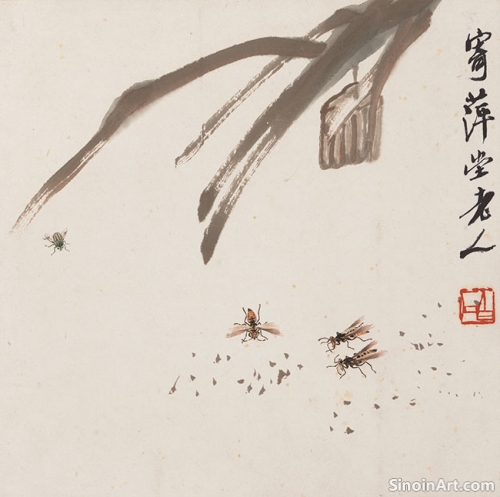Xieyi Landscape Painting: Capturing the Spirit of Nature
|
Landscape painting (山水画, shanshuihua) is a major theme in Xieyi, reflecting a deep reverence for nature. Artists seek not to replicate realistic views, but to capture the essence and spirit of the natural world. They aim to evoke a feeling of vastness, serenity, and harmony.  In Xieyi landscapes, mountains, rivers, trees, and rocks are often depicted with bold, gestural brushstrokes that convey the energy and vitality of nature. The use of ink wash creates a sense of atmosphere and depth, with mist, clouds, and distant hills often depicted using soft, subtle gradients of tone.  The composition in Xieyi landscape paintings often emphasizes asymmetry and balance, reflecting the natural forms and movements of nature. The artist chooses perspectives that suggest a vastness and openness, rather than focusing on realistic details.  Xieyi landscape painting is not just about representing what one sees but about expressing how one feels. The artist aims to create a personal interpretation of the landscape, reflecting their own emotions and spiritual connection with nature. Through the expressive use of brushwork and ink wash, Xieyi landscape painting invites viewers to experience the grandeur and tranquility of nature. The goal is not to create a photographic image but to evoke a feeling, a mood, and a sense of connection with the natural world. |
Tag : Xieyi Landscape Painting, Chinese Literati Landscape, Spirit of Nature in Painting, Ink Wash Landscape, Expressive Landscape Art
Related information
- Xieyi Painting and the Concept of "Jing Jie"
- The Future of Xieyi Painting
- Xieyi Figures: Capturing the Essence of Humanity
- The Concept of "Zhong Feng" in Xieyi Brushwork
- Xieyi Painting and the Use of "Splash Ink"
"Jing Jie" (realm) in Xieyi refers to the artist's pursuit of spiritual enlightenment, transcending technical skill to achieve a deeper understanding of themselves, their subject, and the universe, emphasizing intuition, spontaneity, and interconnectedness as they strive for artistic and spiritual transformation.
The future of Xieyi painting is bright, with contemporary artists expanding its boundaries, exploring new mediums, embracing social themes, and sharing their work globally, while the art form's ability to connect emotionally ensures its continued vitality and relevance.
While less common than landscapes and flowers/birds, figure painting (人物画, renwuhua) also has a place within the Xieyi tradition. These works often focus on capturing the character and spirit of the individual rather than simply portraying a likeness. The focus is on expression and inner qualities.
"Zhong Feng" (central tip) is a core Xieyi technique involving holding the brush perpendicular to the paper to create strong, balanced lines with even width, conveying inner strength and control, serving as a foundation for advanced brushwork, and requiring a mastery of precision and consistent brush handling.
"Splash Ink" (pōmò) is a bold and expressive Xieyi technique, involving the free and spontaneous application of ink to create large washes and evoke movement and dynamism, emphasizing the unpredictable nature of ink and water and strategically used to create balance, depth, and vitality.